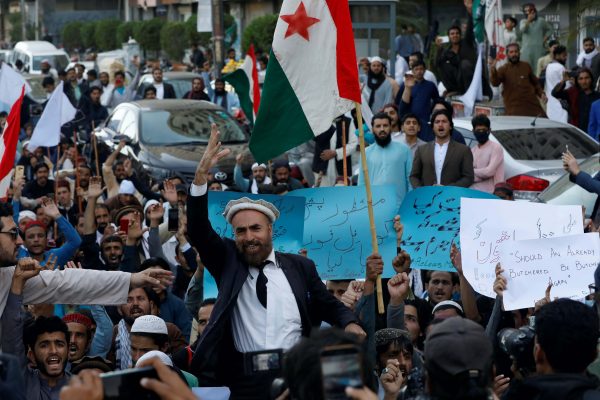The Pashtun tribal areas have remained the focus of conflict since 1979. This was the year of the Soviet invasion of Afghanistan, which catalysed a proliferation of Jihadist culture in the area, influenced by both local Deobandi and foreign Salafist religious thought. This Jihadist culture further intensified in the wake of the 9/11 attacks and the US-led War on Terror in 2001. The persistence of colonial legacies such as the Frontier Crimes Regulations (FCR) — a legal framework that kept the former-FATA region in relative isolation from Pakistan’s ‘centre’ — also contributed to social inequality, a governance vacuum and political instability in the region.
Successive governments in Pakistan have tried countering militancy in the tribal areas since early 2002 using military operations. These efforts did not establish a durable peace. Instead, the army’s use of disproportionate force and the United States’ unlawful CIA-operated drone strikes resulted in collateral damage and forced internal displacement. This not only invited major backlash but, in some cases, also turned the population against Pakistan’s civil and military authorities. The army’s selective use of force against the anti-Pakistan Taliban and half-hearted peace agreements also backfired, allowing militants to further consolidate their ideological position in tribal areas.
In order to counter these threats, local tribes in the former FATA region have tried taking action against militants and terrorists. One strategy has been the use of Jirga — traditional tribal decision-making bodies — as a means of conflict resolution. This often results in the convening of Lashkars, Pashtun tribal militias that carry out and enforce the decisions arrived at within Jirga. Jirga and Lashkars were the major grassroots efforts of local people in the region who sought to attain a level of control over their immediate environment in the face of increasing violence.
Pakistan claims that its successive military operations in the tribal areas have successfully flushed out militants and helped to reduce terrorist attacks. But on-and-off attacks by militants still occur.
Many believed that the May 2018 constitutional reforms, which sought to merge the tribal region with the Khyber Pakhtunkhwa province and bring them into the country’s mainstream, would help address security and socio-economic challenges. But the formation and rise of the Pashtun Tahafuz Movement (PTM), an indigenous movement of young Pashtuns that seeks to hold the military accountable for alleged rights violations, indicates that the situation on the ground is still far from ideal.
The merger of the former FATA region is still facing legal and administrative complications. Ghulam Qadir Khan Daur, an author and former bureaucrat from the former-FATA region, says that the ‘people [in the region] are disappointed [and] … want to know whether we are still governed by the old system because they do not see the new [governance] system working’.
Many, including Daur, are of the view that the reforms were implemented in haste, with no clear roadmap or ownership of the process. Echoing similar concerns, Afrasiab Khattak, a renowned Pashtun politician and former lawmaker, believes that the merger ‘has resulted in lacklustre administrative, judicial, security and economic reforms’ — especially because it was ‘largely conceived as an administrative move with no clear ownership or roadmap’.
On the other hand, the PTM has remained a nuisance for the country’s military establishment, which has allegedly blacklisted the movement’s members from appearing on the country’s mainstream electronic media networks. The leader of the PTM and member of the National Assembly Mohsin Dawar is also often barred from attending anti-government rallies. The country’s opposition parties are engaging in scathing critiques of both the military and the PTI government — but in the eyes of the military and civilian leadership, protest by the ‘mainstream’ parties is acceptable while critique from parties and leaders belonging to the ‘peripheries’, especially former-FATA region, is not.
It is still difficult to gauge the true prospects of peace in Pakistan’s border region. One key to peace and stability in the region is addressing the grievances of local Pashtuns, who have suffered violence and displacement at the hands of both local militants and the Pakistani military.
Farooq Yousaf holds a PhD in Politics from the University of Newcastle. He is Assistant Editor at South Asia Research (SAGE Journal) and Fellow at the South Asia Democratic Forum, Brussels.
This article is drawn from the author’s recent book Pakistan, Regional Security and Conflict Resolution: The Pashtun ‘Tribal’ Areas (Routledge, 2020).

